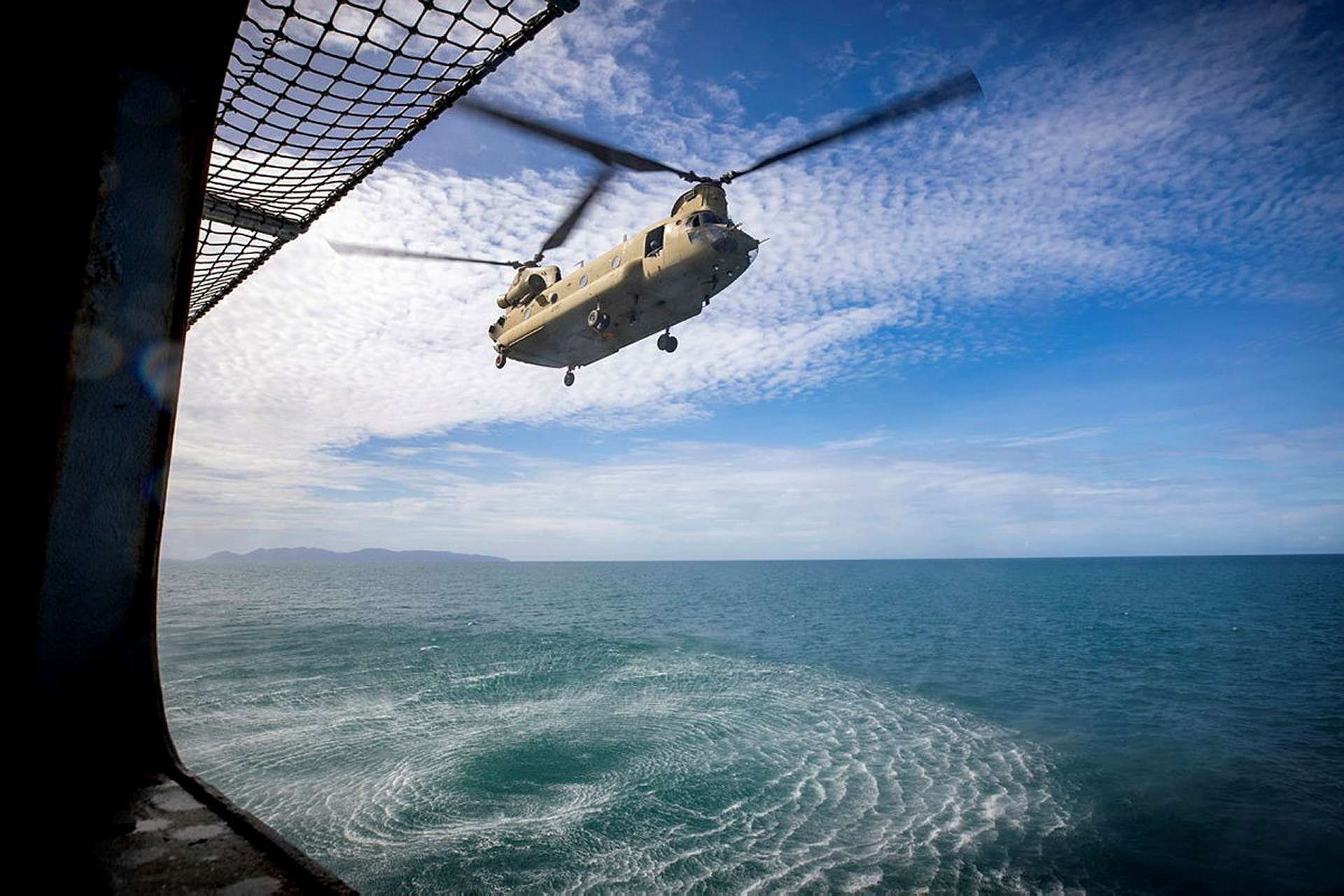Breaking news
Australia Unveils Record $37 Billion Defense Budget.
Australia has announced a record defense budget of AU$55.7 billion, US$36.8 billion, for 2025, representing a 6.3% increase from the previous year and accounting for 2.02% of the country's GDP. This significant budgetary increase underscores Australia's commitment to enhancing its military capabilities amid rising geopolitical tensions in the Indo-Pacific region.
Follow Army Recognition on Google News at this link

Australian Army CH-47 Chinook lands onboard HMAS Choules at sea, on flight operations (Picture source: Australian MoD)
The defense budget includes an allocation of AU$16.7 billion for equipment acquisitions and AU$17.2 billion for maintaining existing assets. A notable portion, AU$10.7 billion, is designated for the Navy, including substantial investments in nuclear-powered submarines under the AUKUS agreement with the United States and the United Kingdom. Spending on these submarines is expected to rise sharply, from AU$475 million last year to AU$2.8 billion next year, reaching AU$4.97 billion by 2027-2028.
Other significant allocations include AU$813 million for six Hunter-class frigates and AU$587 million for six Arafura-class offshore patrol vessels. The Army will receive AU$11.8 billion for acquiring advanced assets such as Boxer armored vehicles, Redback infantry fighting vehicles, Huntsman self-propelled howitzers, High Mobility Artillery Rocket Systems, M1A2 Abrams tanks, advanced surface-to-air missile systems, and new helicopters.
The Air Force is allocated AU$9.5 billion, with a substantial portion dedicated to the acquisition of F-35A fighter jets, of which nine out of 72 remain undelivered. The arrival of four MC-55A Peregrine electronic warfare aircraft has been delayed by two years, impacting the planned capabilities of the Air Force.
The Australian Signals Directorate, responsible for foreign signals intelligence and cybersecurity, will receive AU$2.7 billion, while AU$1 billion is set aside for defense intelligence. The budget also includes AU$1.3 billion for the Capability Acquisition and Sustainment Group and the Guided Weapons and Explosive Ordnance enterprise, aimed at promoting the sovereign production of missiles and munitions.
Australia's strategic alliances play a crucial role in its defense posture. The country collaborates closely with the United States through the ANZUS treaty and the AUKUS pact, focusing on nuclear submarine development and other advanced defense technologies. Additionally, Australia participates in the Quad alliance with the US, Japan, and India, enhancing regional security cooperation.
The geopolitical environment in the Indo-Pacific is increasingly complex, with China's assertive actions and military expansion prompting Australia to bolster its defense capabilities. The 2024 National Defence Strategy emphasizes the need for a robust and self-reliant defense force to address strategic competition and potential threats in the region. This strategy includes significant investments in long-range strike capabilities, autonomous systems, and the hardening of military bases in northern Australia.
Australia's defense strategy is also shaped by its commitment to a free and open Indo-Pacific, countering coercive tactics and ensuring regional stability. The country's proactive defense approach, supported by record budget allocations, aims to ensure national security and maintain a strategic balance in response to evolving regional dynamics.

























